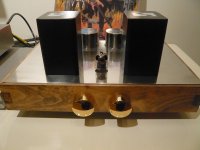Hi Andy,
yes windings in parallel would double the DC current capability but inductance reduces to 25% since inductance changes with the nr of windings squared.
When Lundahl lists a source impedance in an connection alternative, the frequency respose for that connection alternative would be reached with the same source impedance and behaviour would be the best.
Ringing happens in the ultrasonic domain, typically at around 40-50kHz. When a transformer 'rings' the frequency response would rise in that area. That can be as much as 6dB or evene more. In some cases ringing can even start in the audio band. Normally ringing can be controlled with termination resistors on the secondary or more effectively with RC Zobel networks.
If ringining impacts the audible sound quality depends on the overall system and also on your preference. In most application I do not find it very objectionalble if it is not extreme and far out in the ultrasonic band. The termination of the secondary can bring more sonic disadvantages than advantages.
All a matter of taste and philosophy.
Best regards
Thomas
yes windings in parallel would double the DC current capability but inductance reduces to 25% since inductance changes with the nr of windings squared.
When Lundahl lists a source impedance in an connection alternative, the frequency respose for that connection alternative would be reached with the same source impedance and behaviour would be the best.
Ringing happens in the ultrasonic domain, typically at around 40-50kHz. When a transformer 'rings' the frequency response would rise in that area. That can be as much as 6dB or evene more. In some cases ringing can even start in the audio band. Normally ringing can be controlled with termination resistors on the secondary or more effectively with RC Zobel networks.
If ringining impacts the audible sound quality depends on the overall system and also on your preference. In most application I do not find it very objectionalble if it is not extreme and far out in the ultrasonic band. The termination of the secondary can bring more sonic disadvantages than advantages.
All a matter of taste and philosophy.
Best regards
Thomas
Hi Andy,
The termination of the secondary can bring more sonic disadvantages than advantages.
All a matter of taste and philosophy.
Best regards
Thomas
I have built a opt-coupled linestage and I agree. With termination resistors across the secondary of the OPT the sound gets less "punchy" and a bit more "dull". Why?
Attachments
hi!
I forgot to adress this question:
In a transformercoupled SE stage you would not want to leave the cathode resistor unbypassed unless it is very small as in filament bias. An unbypassed cathode resistor will increase the source impedance. It gets multiplied by the mu of the tube. Ultrapath is a way around big and ugly electrolytic bypass caps.
So leaving the resistor unbypassed would increase the rp and thus decrease ringing, if there is any, but also dramatically reduce the bandwidth
In a PP stage it is a different matter
Best regards
Thomas
I forgot to adress this question:
How does this vary if the cathode resistor is bypassed or unbypassed?
In a transformercoupled SE stage you would not want to leave the cathode resistor unbypassed unless it is very small as in filament bias. An unbypassed cathode resistor will increase the source impedance. It gets multiplied by the mu of the tube. Ultrapath is a way around big and ugly electrolytic bypass caps.
So leaving the resistor unbypassed would increase the rp and thus decrease ringing, if there is any, but also dramatically reduce the bandwidth
In a PP stage it is a different matter
Best regards
Thomas
- Status
- This old topic is closed. If you want to reopen this topic, contact a moderator using the "Report Post" button.
